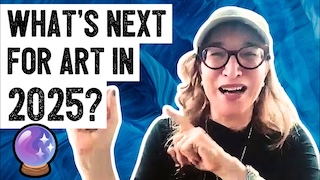
NFT Art Trends: What Sells Best in 2025?
The NFT art market has undergone a profound evolution from its explosive early days in 2021 to a more mature, nuanced ecosystem by 2025.
As digital art becomes more entrenched in mainstream culture, understanding current trends is crucial for artists, collectors, and investors alike.
2025 is proving to be a pivotal year marked by the dominance of niche styles, the rise of technological innovation, and a growing preference for sustainable, community-driven creations.
Key Takeaways
- Traditional art institutions are embracing NFTs.
- AI-generated and collaborative art projects are surging.
- Collectors prefer community-driven collections and verifiable scarcity.
- Utility and interoperability are now expected features.
- Sustainability and eco-conscious NFTs are gaining momentum.
What Has Changed in NFT Art From 2021 to 2025?
The Shift from Hype to Sustainable Growth
In 2021, the NFT art scene was defined by boom-bust cycles and speculative fervor.
Fast-forward to 2025, the market is far more stable thanks to the emergence of verified marketplaces and platforms like Ilunafriq, which streamline NFT management and discovery across chains.
Regulatory frameworks have also reinforced buyer confidence.
New Buyer Profiles: From Crypto-Natives to Mainstream Collectors
NFTs have captured the interest of a broader demographic. Institutional investors, museums, and even traditional art auction houses are entering the digital space.
For example, Sotheby’s, one of the world’s most prestigious auction houses, launched a dedicated NFT platform called Sotheby’s Metaverse, allowing digital artists to auction their works alongside traditional art masterpieces.
Similarly, the British Museum has partnered with blockchain companies to release curated NFT collections from their historical archives.
Top NFT Art Trends Dominating 2025
1. AI-Generated Art: Creativity Meets Algorithms
Artists are collaborating with AI to create groundbreaking work, blending human imagination with machine precision.
This trend has opened new doors for styles and genres that were previously unimaginable, making AI a true co-creator in the artistic process. Tools like generative adversarial networks (GANs) help produce complex, evolving pieces, with artists like Claire Silver leading the movement and redefining what digital creativity means.
Platforms like Ilunafriq make it easier for artists to showcase these hybrid creations aggregated from multiple marketplaces, expanding their reach and helping collectors discover cutting-edge works.
- Increasing demand for AI-curated exhibitions and gallery shows.
- Greater emphasis on the artist’s ability to guide and customize AI outputs for uniqueness.
2. Community-Centric Projects: More Than Just Ownership
DAOs focused on curating NFT art are booming, enabling collectors and fans to have a say in the direction of art collections.
This model creates an intimate connection between artists and their communities, turning fans into active participants rather than passive buyers.
Collectors are drawn to projects offering exclusive perks such as IRL (in real life) events, merchandise, and virtual gallery access, solidifying a sense of belonging and loyalty.
Community remains a pillar of successful projects as platforms like Ilunafriq prioritize seamless aggregation and discovery for artists and collectors, ensuring that engagement starts with easy access.
- Growing importance of governance tokens to influence project roadmaps.
- Exclusive art drops and voting rights for community members.
3. Limited-Edition Drops and Ultra-Rare Collections
Massive 10k profile picture (PFP) projects have fallen out of favor, as buyers crave intimacy and exclusivity in their collections.
Smaller collections, typically under 500 pieces, are seen as more meaningful investments that offer greater perceived value and connection to the artist.
Micro-collections emphasizing authenticity and verifiable scarcity dominate the scene, often becoming prized trophies in collectors’ portfolios.
Artists seek to differentiate their work on multichain platforms like Ilunafriq, which can showcase exclusive collections cohesively and make discovery effortless across blockchains.
- Rising secondary market prices for ultra-rare NFT collections.
- Introduction of real-world benefits tied only to limited holders.
4. Utility-Driven NFTs: Beyond the Artwork
Today’s NFT art often comes bundled with real-world value, adding tangible reasons for collectors to invest beyond aesthetics.
Utility elements such as access to masterclasses, backstage passes, merchandise, or even game integrations significantly increase an artwork’s lifetime value.
As buyers seek more than static images, offering a real-world extension to digital ownership is becoming a must-have feature for successful NFT projects.
- Smart contracts now routinely include dynamic utilities like event tickets and unlockable content.
- Increasing partnerships between NFT artists and lifestyle brands for bundled experiences.
5. Dynamic NFTs: Art That Evolves Over Time
In 2025, dynamic NFTs, which are artworks that change based on external factors like time, user interaction, or blockchain events, are gaining massive popularity.
These NFTs offer a living, evolving experience rather than static images, creating deeper emotional engagement with collectors.
Artists use blockchain technology to design pieces that tell different stories or reveal hidden layers over time, ensuring continued excitement and value.
And platforms like Ilunafriq make it easier for artists to showcase these new formats across multiple blockchains, supporting the new wave of interactive and responsive digital art.
- Dynamic NFTs tied to real-world events, such as holidays or sports scores.
- Customizable NFTs that allow collectors to “choose their own adventure” visually over time.
What Types of NFT Art Are Selling Best Right Now?
1. AI-Enhanced Fine Art
Highly detailed, AI-influenced artworks released in very limited quantities are commanding premium prices. Collectors are increasingly drawn to pieces that combine machine learning intricacy with human artistic vision, pushing the boundaries of traditional aesthetics.
- Example: Claire Silver’s AI-collaborative artworks continue to set record sales on curated NFT marketplaces.
2. Animated and Interactive NFTs
Art that evolves with time or responds to collector interaction is increasingly favored. These dynamic pieces captivate audiences by offering an ever-changing experience that keeps collectors emotionally and intellectually engaged.
3. Physical + Digital Twin NFTs (Phygital Art)
Buyers value having both a tangible artwork and a digital NFT, enhancing authenticity and emotional connection. Phygital art merges the tangible value of traditional art with the futuristic ownership capabilities of blockchain technology.
- Example: Damien Hirst’s “The Currency” offered collectors a choice between a physical painting and an NFT version.
4. Membership-Based NFT Art
Artworks tied to exclusive clubs, VIP content, or continuous airdrops attract loyal collectors. These memberships turn art ownership into an evolving experience, with ongoing perks and a sense of elite community belonging.
- Example: PROOF Collective offers exclusive artist collaborations and curated NFT drops for its members.
5. Storytelling-Based NFT Series
Narrative-driven collections that release over multiple installments help foster long-term engagement. By allowing collectors to journey through evolving story arcs, artists create emotional investment that extends beyond the initial purchase.
- Example: Aku Dreams by Micah Johnson releases story chapters through sequential NFT drops.
How Artists Are Adapting to the 2025 Market
Embracing New Mediums
From AR/VR installations to sound-paired NFTs, artists are expanding their formats to reach a variety of new audiences.
Building Long-Term Brand Identity
Instead of sporadic drops, artists are creating cohesive brands and evolving narratives across their body of work.
Creating Multi-Utility Collections
Today’s NFT collections offer layered benefits such as loyalty programs, access to exclusive events, and even physical merchandise, which all enhance the art’s lifetime value.
Where the NFT Art Market is Heading in 2026 and Beyond
Rise of Fully On-Chain Art
NFTs will increasingly store their metadata fully on-chain, ensuring permanence and decentralization.
Personalized AI NFTs
This personalization could involve dynamic visuals, evolving narratives, or interactive features that respond to the owner’s preferences and behaviors, making each NFT a truly one-of-a-kind experience.
Cross-Chain NFT Ecosystems
As NFT ecosystems become more interconnected, platforms like Ilunafriq will play a crucial role by enabling seamless cross-chain navigation and transactions.
Increased Legal Frameworks
Stronger legal protections for digital ownership are on the horizon, making NFT investments safer and more mainstream.
Conclusion: Preparing for the New Era of NFT Art
NFT art in 2025 is no longer a novelty like it was just a couple of years ago; it’s an evolving sector requiring adaptability from artists and strategic thinking from collectors.
Platforms like Ilunafriq empower creators by solving real-world challenges from aggregation to promotion, allowing them to focus on creating meaningful, future-proof art.
Whether you’re an artist looking to consolidate your portfolio or a collector seeking new opportunities, staying aligned with current trends is essential as the NFT art world is growing up, and those who evolve with it will reap the rewards.
Read Next:
FAQ
What types of NFT art are most popular in 2025?
Collectors in 2025 are drawn to AI-generated art, phygital pieces, interactive NFTs, and storytelling-driven collections offering real-world utility.
How are artists using AI in NFT art creation?
Artists collaborate with AI models to blend human creativity with machine innovation, creating unique and dynamic digital art forms.
What is phygital art in NFTs?
Phygital art combines a physical artwork and a digital NFT, offering buyers both a tangible and digital asset authenticated on the blockchain.
Are eco-friendly NFTs becoming more important in 2025?
Absolutely. Artists are increasingly prioritizing sustainability by minting on eco-friendly blockchains and promoting carbon-neutral art.
How can I invest smartly in NFT art today?
Focus on collections that offer verifiable scarcity, strong community engagement, cross-chain support (like those on Ilunafriq), and long-term value through utility and brand consistency.




